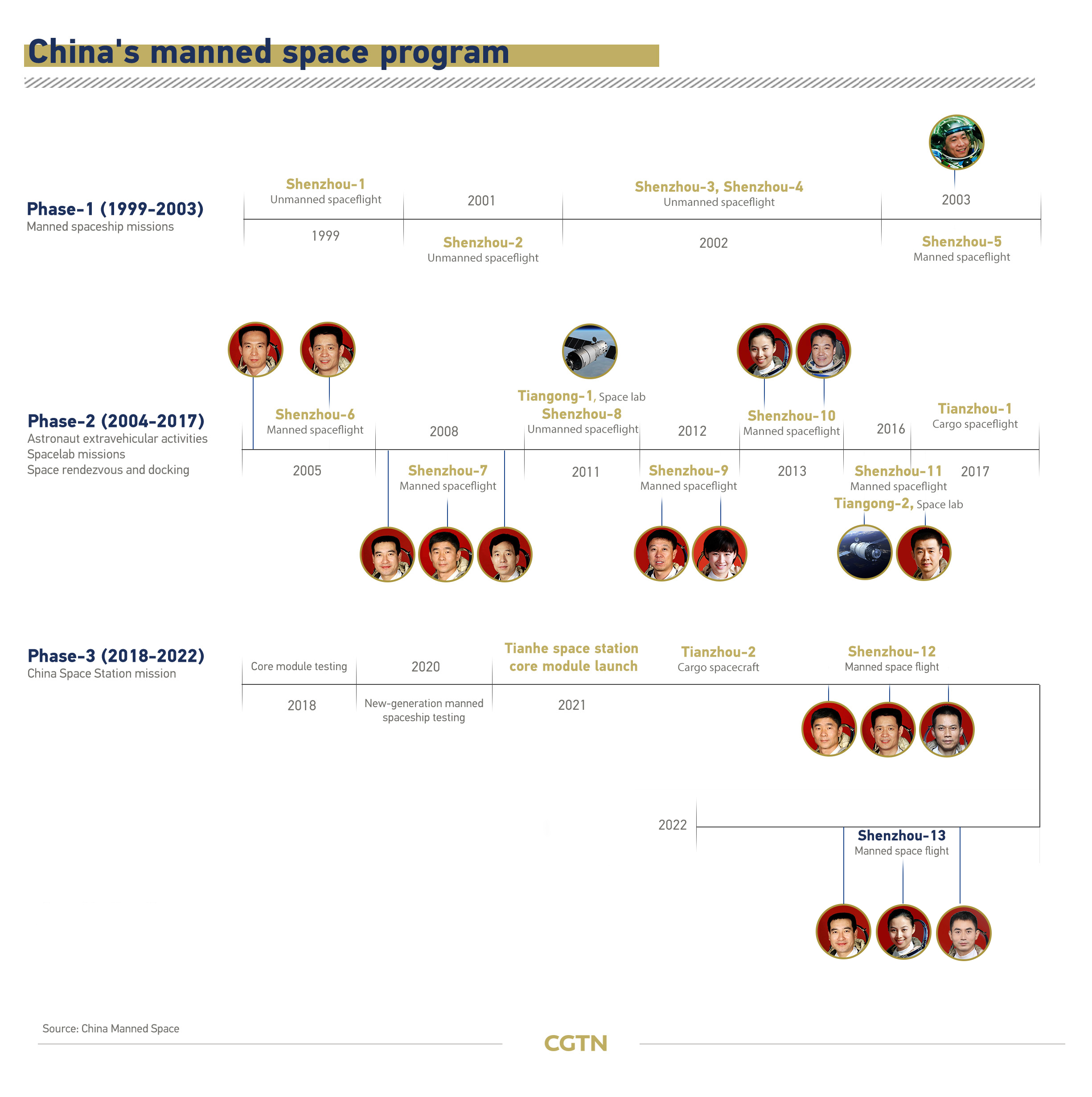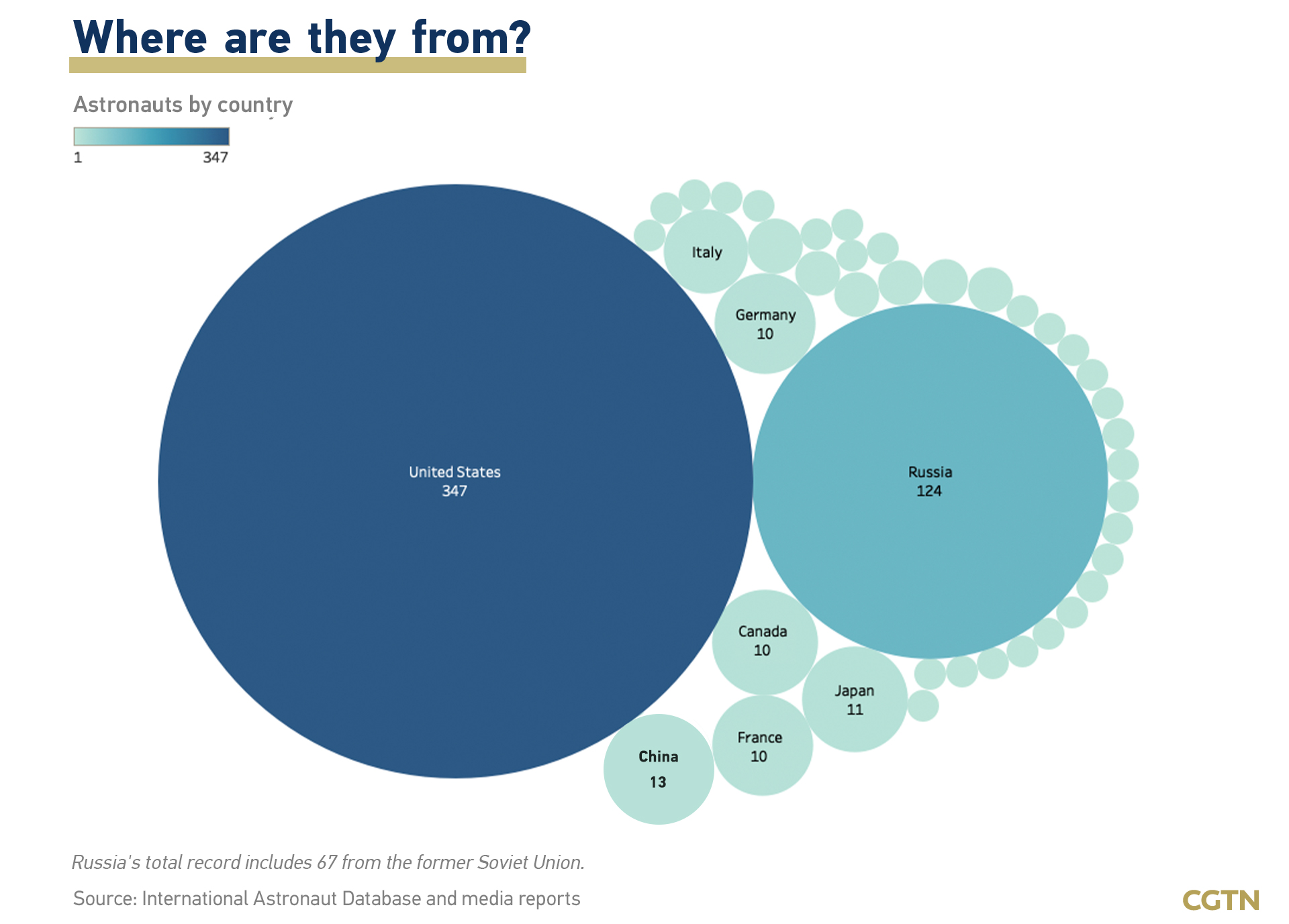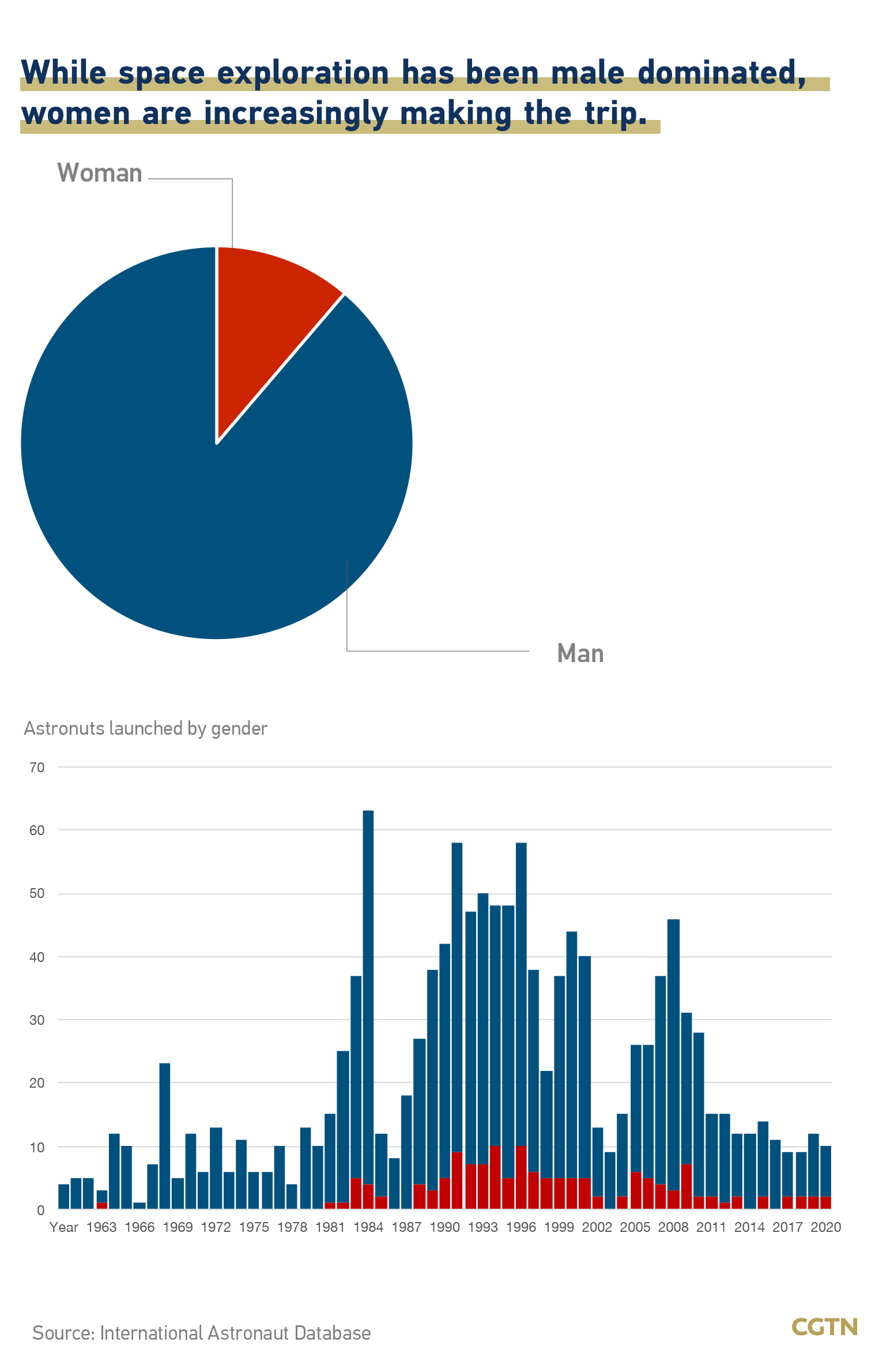The three Chinese astronauts or taikonauts carried into space on board the Shenzhou-13 spaceship entered the core module Tianhe of China's space station on October 16, the China Manned Space Agency (CMSA) said.
The trio – Zhai Zhigang (the commander), Wang Yaping and Ye Guangfu – entered Tianhe hours after the spaceship successfully docked with the core module, becoming China's second crew stationed there.
Wang is the first Chinese female taikonaut to work in a space station. And during their six months' stay, she will also become the first Chinese female taikonaut to do a spacewalk. Up to three spacewalks are planned, Ye said ahead of the launch.
Although a late starter, China has increasingly made its presence felt on the human spaceflight stage. In 1992, China's manned space program adopted a three-step approach to building a "permanent outpost" in space. Its first crewed mission took place in 2003 when astronaut Yang Liwei made his maiden flight on a Shenzhou-5 spacecraft.

The construction of the Chinese station came "relatively late," but that was also an advantage that allowed China to use the latest technologies and concepts, particularly in the areas of reliability and safety, said Ji Qiming, assistant to the China Manned Space Agency assistant director.
Human spaceflight at 60
Since the first Soviet cosmonaut Yuri Gagarin roared into space in 1961, human spaceflight has recorded 1,294 missions over six decades, data from the International Astronaut Database shows.
Manned spaceflight programs were initiated one after another in the early 1960s. Challenged by the Soviet manned mission, the then U.S. President John F. Kennedy pledged the country would land a man on the Moon before the decade ended. And after eight years and three NASA programs, Apollo 11 Commander Neil Armstrong placed the first human footstep on the Moon on July 20, 1969.
But as the two powers' political tensions began to thaw, the space race gradually gave way to cooperation.
The space world ushered in a new era, from intense competition for supremacy and prestige to worldwide collaboration with the construction of the International Space Station (ISS).
In 1975, the Apollo-Soyuz Test Project became the first crewed international space mission, paving the way for future global partnerships.
Since then, more than 500 astronauts from almost 40 countries have traveled to space, with over 60 percent of them from the U.S. and about 20 percent from Russia (including 67 astronauts from the former Soviet Union).

More female astronauts are making the trip
While space exploration has been male-dominated over the years, women are making an increasing number of trips.
According to NASA, 65 women had flown into space as of March 2021, including astronauts, payload specialists and space station participants.
The first woman in space was Russian cosmonaut Valentina Tereshkova, who flew on Vostok 6 on June 16, 1963. Peggy Whitson is the U.S. record-holder for the longest time in space at 665 days, and ranks eighth globally. NASA astronauts Jessica Meir and Christina Koch completed the first all-female spacewalk at the ISS in 2019.
"Female pioneers from the entire history of aviation and space history have helped us get to the point where we are now and with many capabilities to help us search for life elsewhere in the solar system and beyond," Dava Newman, NASA's deputy administrator, wrote in a blog post about pioneering women in space history.
In the future, with more private interests on board, like SpaceX's commercial crew vehicles and Jeff Bezos' Blue Origin, human spaceflight will see greater diversity and potential.


